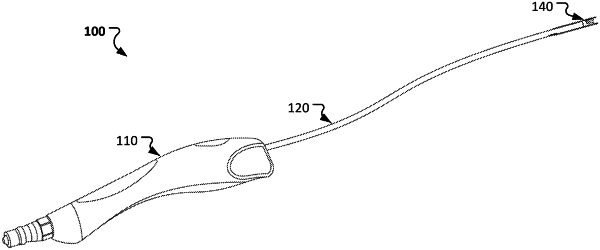| CPC A61B 17/32037 (2013.01) [A61F 2/07 (2013.01); A61B 2017/00473 (2013.01); A61B 2017/320052 (2013.01); A61B 2217/005 (2013.01); A61F 2002/9528 (2013.01); A61M 25/09 (2013.01)] | 20 Claims |

|
1. A method of cutting a material within a circulatory system of a patient, the method comprising:
deploying a first guidewire within the circulatory system;
deploying a second guidewire within the circulatory system and along an opposite side of the material in relation to the first guidewire;
advancing an intravascular cutting device over the first and second guidewires such that the first guidewire is slidably disposed within: (i) a first guidewire lumen of the intravascular cutting device and (ii) a first cutting head guidewire lumen of the intravascular cutting device, and such that the second guidewire is slidably disposed within: (i) a second guidewire lumen of the intravascular cutting device and (ii) a second cutting head guidewire lumen of the intravascular cutting device; and
supplying a cutting fluid into a cutting fluid conveyance lumen of the intravascular cutting device while a fluid jet prong of the intravascular cutting device and a deflector prong of the intravascular cutting device are on opposite sides of the material such that the cutting fluid: (i) sprays out of a nozzle opening of the fluid jet prong, (ii) cuts through the material, and (iii) strikes a cutting fluid deflection surface of the deflector prong.
|